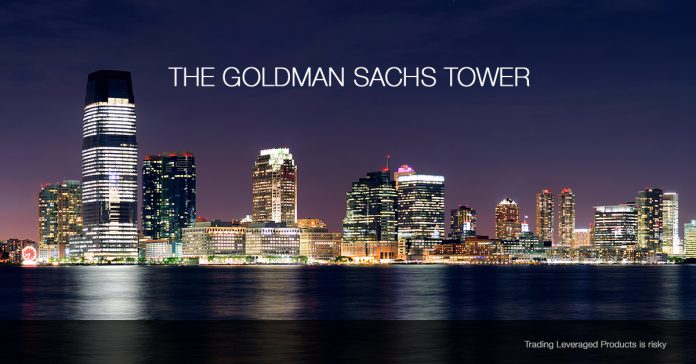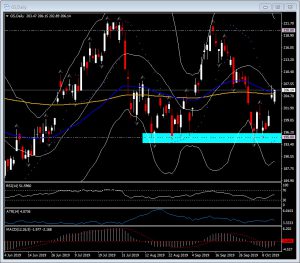Goldman Sachs, Daily & Weekly
Goldman Sachs reports 2019 third quarter earnings today Tuesday October 15 (11:30 GMT), before the New York market open . Financial stocks in particular have been in the firing line as the FED interest rate path continues to point south and worries surrounding global growth escalate.
Goldman Sachs Group (GS), the once bastion of the exclusive super rich and 150 years old this year, is now a much more diverse and outward looking organization than it used to be. The notoriously long hours and 100%+ commitment expected and demanded from the investment bank from staff is still the creed of the place but with the launch of products like the Marcus account things are changing.
The Marcus (named after the company’s founder Marcus Goldman) “offers no-fee, fixed-rate personal loans, high-yield online savings accounts and certificates of deposit to help people achieve financial well-being”, something that the founder would find very interesting as the bank made its reputation in investment banking and successful IPOs. In the UK the account is a little over a year old and is “an easy-access savings account, which at the time paid 1.5% AER, including a fixed bonus of 0.15% for 12 months, which was the highest in the UK since 2016.
So why would THE bank, as many refer to GS, be interested in online savers in the UK and fixed-rate personal loans for ordinary US workers? Answer – Reputation. It all goes back 11 years and the great financial crisis of 2008, when Goldman Sachs and all of Wall Street were deemed to be the bad boys that caused the crisis, yet they were “bailed out” by the government as ordinary workers lost their jobs and homes. In September that year Bear Sterns and Lehman Brothers had failed and thousands of jobs were lost, and it was not only banks, but Insurance giant AIG also required a bail out of $85 billion to survive. The money was coming from the US government and the guy in charge of the US Treasury at the time was Henry (Hank) Paulsen (a former CEO of THE bank). A total of $800 billion was eventually pumped into the US economy to save Recession becoming Depression. GS (and Morgan Stanley) were seen as the next most vulnerable of the Wall Street banks and 11 years ago this week they received $10 billion each from the government, a relatively small amount compared to others on Wall Street, but reputations were fundamentally tarnished. A month later in November 2008 the stock was trading at under $49.00.
The consensus for today’s earnings, from the 28 analysts that follow the stock, is for Earnings per share to top $5.03 and Revenue to be in excess of $8.55 billion. Many major hedge funds remain bullish but wary of financials, with reports that the number of bullish hedge fund positions fell by 15 in recent months. Overall, however, hedge fund sentiment is still quite bullish, just not as bullish as before and with GS not being a top 30 hedge fund pick, although it was in 61 hedge funds portfolios at the end of June 2019.
Technically, the stock printed a Double Top (bearish) at $220.00 and has support zones at $195.00, $180.00 and $150.00. It has rallied in recent days to the key 50 and 200-day moving averages. $206.00 is the first key Resistance zone if the double top is to be tested again.
Click here to access the Economic Calendar
Stuart Cowell
Head Market Analyst
Disclaimer: This material is provided as a general marketing communication for information purposes only and does not constitute an independent investment research. Nothing in this communication contains, or should be considered as containing, an investment advice or an investment recommendation or a solicitation for the purpose of buying or selling of any financial instrument. All information provided is gathered from reputable sources and any information containing an indication of past performance is not a guarantee or reliable indicator of future performance. Users acknowledge that any investment in Leveraged Products is characterized by a certain degree of uncertainty and that any investment of this nature involves a high level of risk for which the users are solely responsible and liable. We assume no liability for any loss arising from any investment made based on the information provided in this communication. This communication must not be reproduced or further distributed without our prior written permission.





















